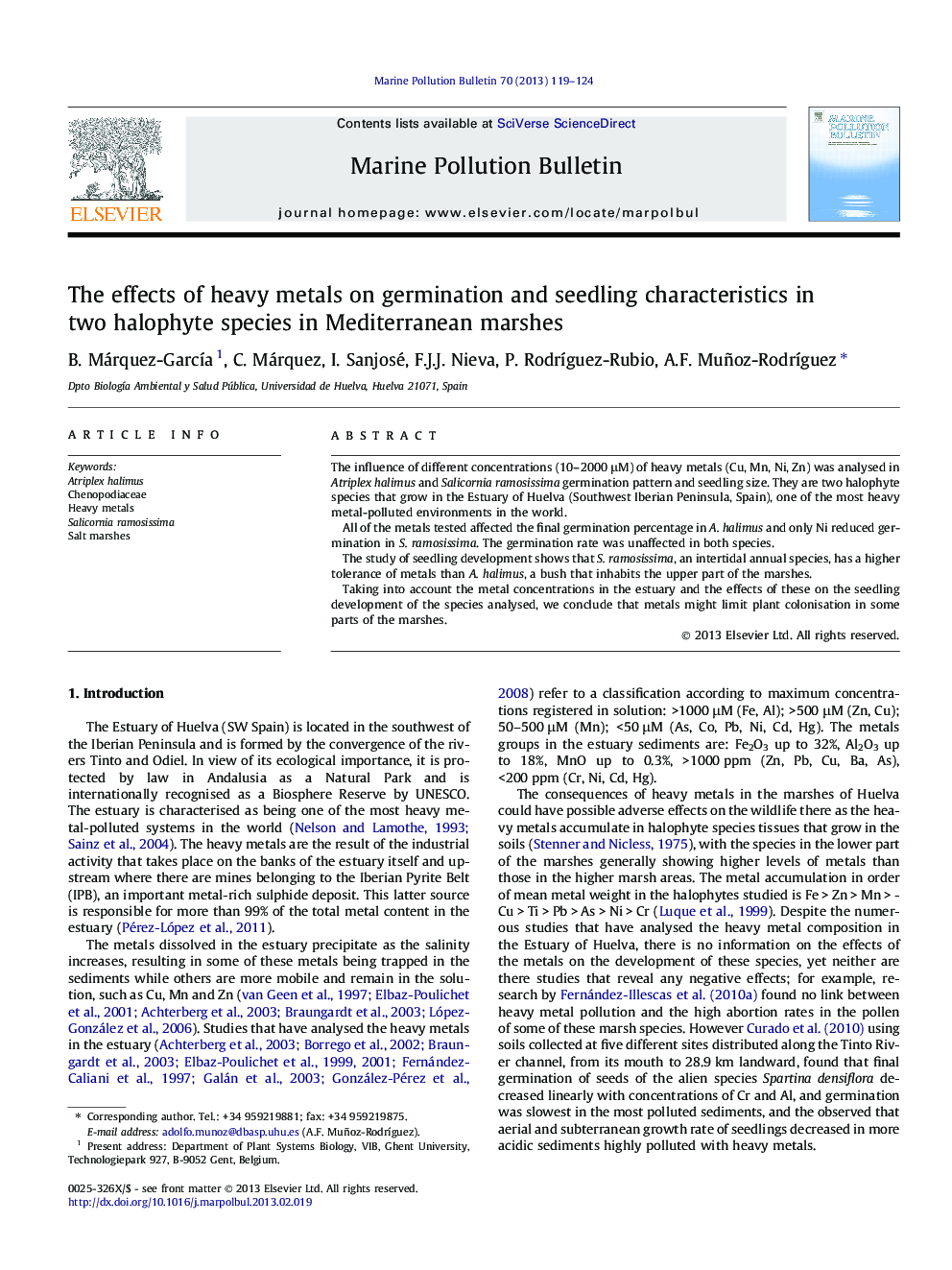| Article ID | Journal | Published Year | Pages | File Type |
|---|---|---|---|---|
| 6359897 | Marine Pollution Bulletin | 2013 | 6 Pages |
The influence of different concentrations (10-2000 μM) of heavy metals (Cu, Mn, Ni, Zn) was analysed in Atriplex halimus and Salicornia ramosissima germination pattern and seedling size. They are two halophyte species that grow in the Estuary of Huelva (Southwest Iberian Peninsula, Spain), one of the most heavy metal-polluted environments in the world.All of the metals tested affected the final germination percentage in A. halimus and only Ni reduced germination in S. ramosissima. The germination rate was unaffected in both species.The study of seedling development shows that S. ramosissima, an intertidal annual species, has a higher tolerance of metals than A. halimus, a bush that inhabits the upper part of the marshes.Taking into account the metal concentrations in the estuary and the effects of these on the seedling development of the species analysed, we conclude that metals might limit plant colonisation in some parts of the marshes.
⺠Atriplex halimus and Salicornia ramossisima are two halophyte species from the Estuary of Huelva (SW Spain). ⺠The Estuary of Hueva is characterised by the presence of heavy metals. ⺠These species are able to grow in soils with high metal content. ⺠The metal content in the Estuary might limit the growth of the species.
